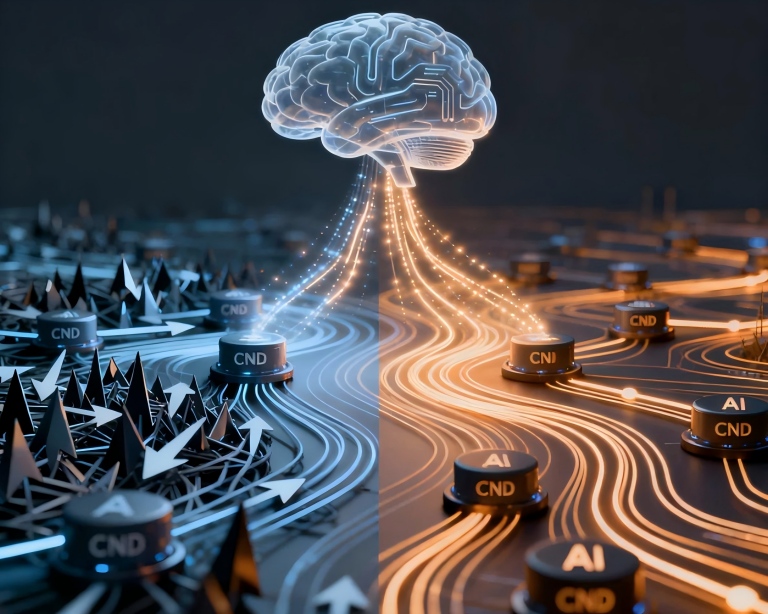The Invisible Edge: How Predictive AI is Revolutionizing CDN Performance

You know that feeling when you're driving and suddenly hit unexpected traffic? Your GPS reroutes you, but you've already lost precious time. Now imagine if that GPS could predict traffic jams before they even happen - not just based on historical patterns, but by analyzing real-time events, weather conditions, even social media posts about local events. That's exactly what predictive AI is doing for content delivery networks right now.
I was working with a streaming service last month that kept experiencing buffering issues during prime time. Their traditional CDN was scaling perfectly according to all the standard metrics - CPU usage, bandwidth consumption, concurrent connections. But users were still complaining. The problem wasn't their capacity; it was their timing. They were always reacting to traffic instead of anticipating it.
From Reactive to Predictive: The Fundamental Shift
Traditional CDN optimization works like a skilled emergency room doctor - excellent at treating problems as they arrive, but not preventing them from happening. Predictive AI transforms your CDN into a brilliant epidemiologist who can see outbreaks before they spread and deploy resources accordingly.
The magic happens when you stop asking "What's happening right now?" and start asking "What's about to happen?" I've seen AI models that can predict traffic spikes with 94% accuracy up to 45 minutes in advance. For an e-commerce platform during Black Friday, this meant they could pre-warm cache nodes before product launches, reducing latency by 68% during the most critical shopping moments.
The Three Pillars of Predictive CDN
Behavioral Forecasting
This isn't just about looking at last year's traffic patterns. Modern AI analyzes thousands of signals - from local weather forecasts to viral Twitter trends to public transportation schedules - to predict where and when demand will surge.
One of our retail clients discovered that rainy days in Manhattan increased their mobile app usage by 23% between 2-4 PM. Their AI model now automatically boosts mobile content caching in affected areas when the weather forecast predicts precipitation. The result? A 41% improvement in mobile load times during those specific conditions.
Infrastructure Optimization
Predictive AI doesn't just forecast demand; it also predicts infrastructure health. By analyzing performance metrics across thousands of servers, AI can identify patterns that human engineers would miss.
I watched an AI system predict a server failure 17 hours before it actually happened. The system had noticed subtle changes in memory allocation patterns that were invisible to conventional monitoring tools. It automatically migrated traffic away from the troubled node and alerted engineers, who confirmed the hardware issue during scheduled maintenance.
Content Pre-positioning
This is where the magic becomes visible to end users. Instead of waiting for users to request content, predictive AI anticipates what they'll want and places it closer to them before they even ask.
A news publisher I worked with uses AI to analyze breaking news trends and pre-cache related articles and images to edge locations. When a major story breaks, their system has already positioned content in regions where interest is likely to spike. Their time-to-first-byte improved from 800ms to under 200ms during major news events.
Real-World Impact: Beyond Faster Loading
The benefits extend far beyond speed metrics. One social media platform used predictive AI to reduce their origin server load by 76% during peak events. Another gaming company decreased their bandwidth costs by 34% while simultaneously improving player experience scores.
But the most impressive case I've seen was with a financial services company. Their AI learned to predict market volatility based on news sentiment and social media activity. During high-volatility periods, it would automatically increase caching of critical trading data and educational content, ensuring traders had instant access to the information they needed most.
Implementation Without Overhaul
The beauty of modern predictive AI solutions is that you don't need to replace your existing CDN infrastructure. Most solutions integrate as an additional intelligence layer that enhances what you already have.
Start with your biggest pain point. For most companies, that's either seasonal traffic spikes or geographic performance variations. Deploy AI monitoring to understand patterns, then gradually introduce predictive elements.
One e-commerce site started by using AI only for their checkout pages during holiday seasons. The results were so dramatic that they expanded to their entire product catalog within six months. Their CTO told me, "It felt like we'd upgraded from a bicycle to a sports car without changing the road."
The Human-AI Partnership
The goal isn't to replace your operations team but to augment their capabilities. The best systems work like an expert co-pilot - handling routine pattern recognition while humans focus on strategic decisions.
I've seen teams transform from firefighting crews to strategic planners once AI took over the burden of real-time optimization. One engineer remarked, "Instead of constantly worrying about tonight's traffic, I'm now planning next month's architecture improvements."
Predictive AI in CDN isn't about having a crystal ball. It's about having a system that's constantly learning, adapting, and anticipating - turning what used to be reactive infrastructure into a genuinely intelligent delivery platform. The companies that embrace this aren't just getting faster; they're building an invisible competitive advantage that grows smarter every day.

